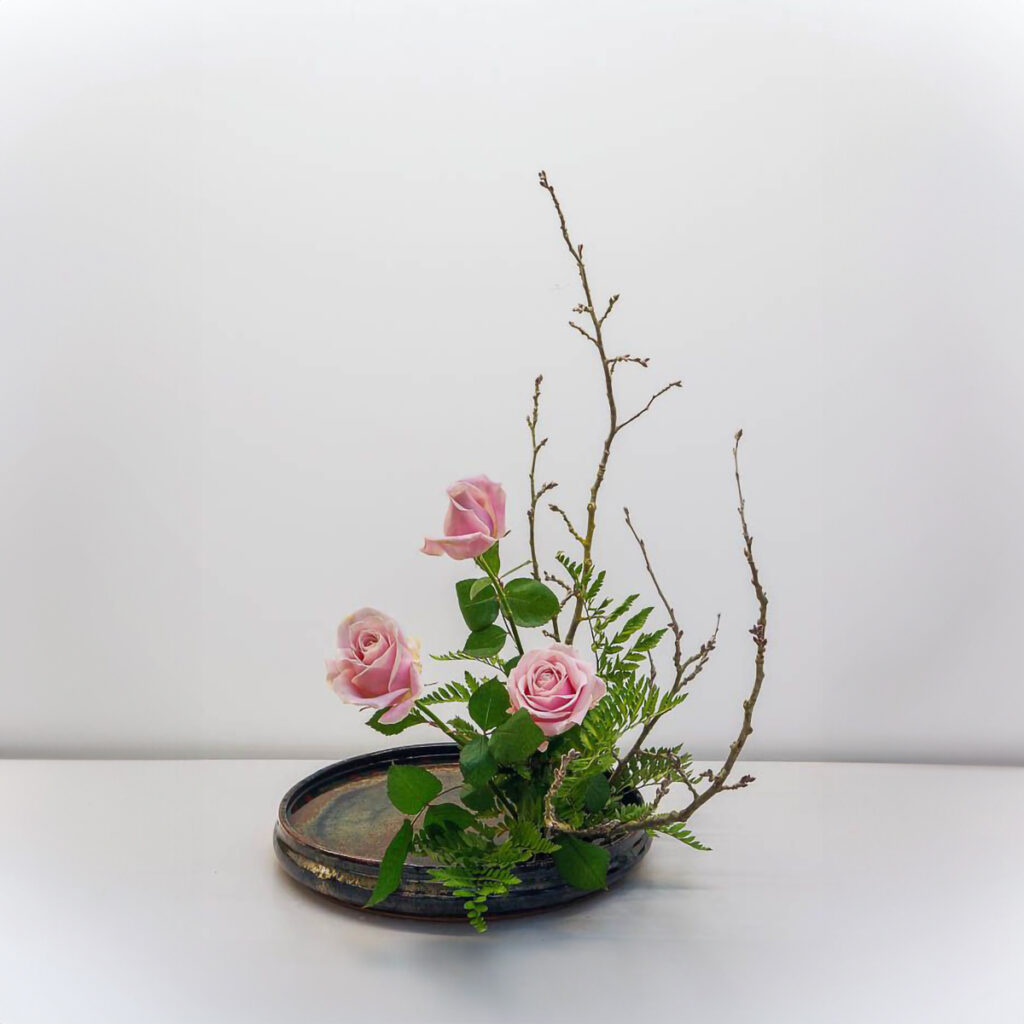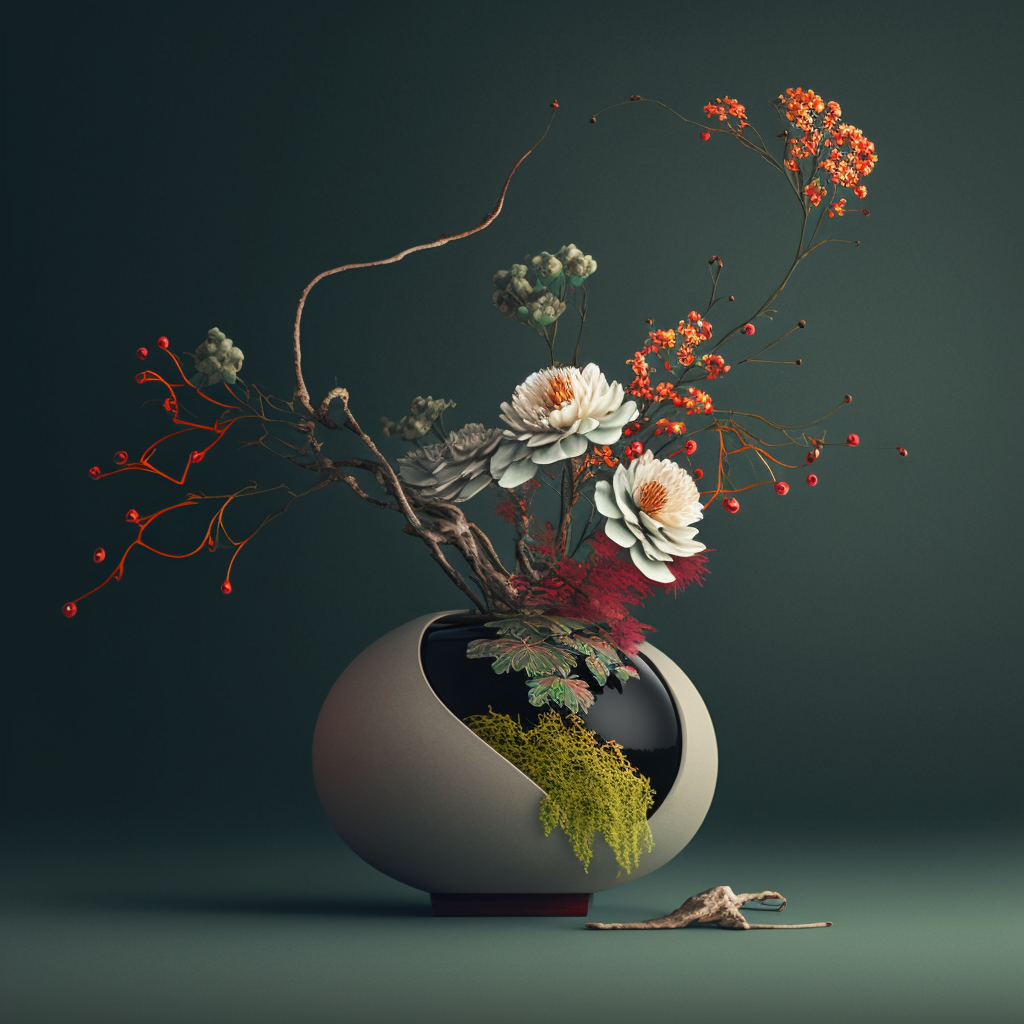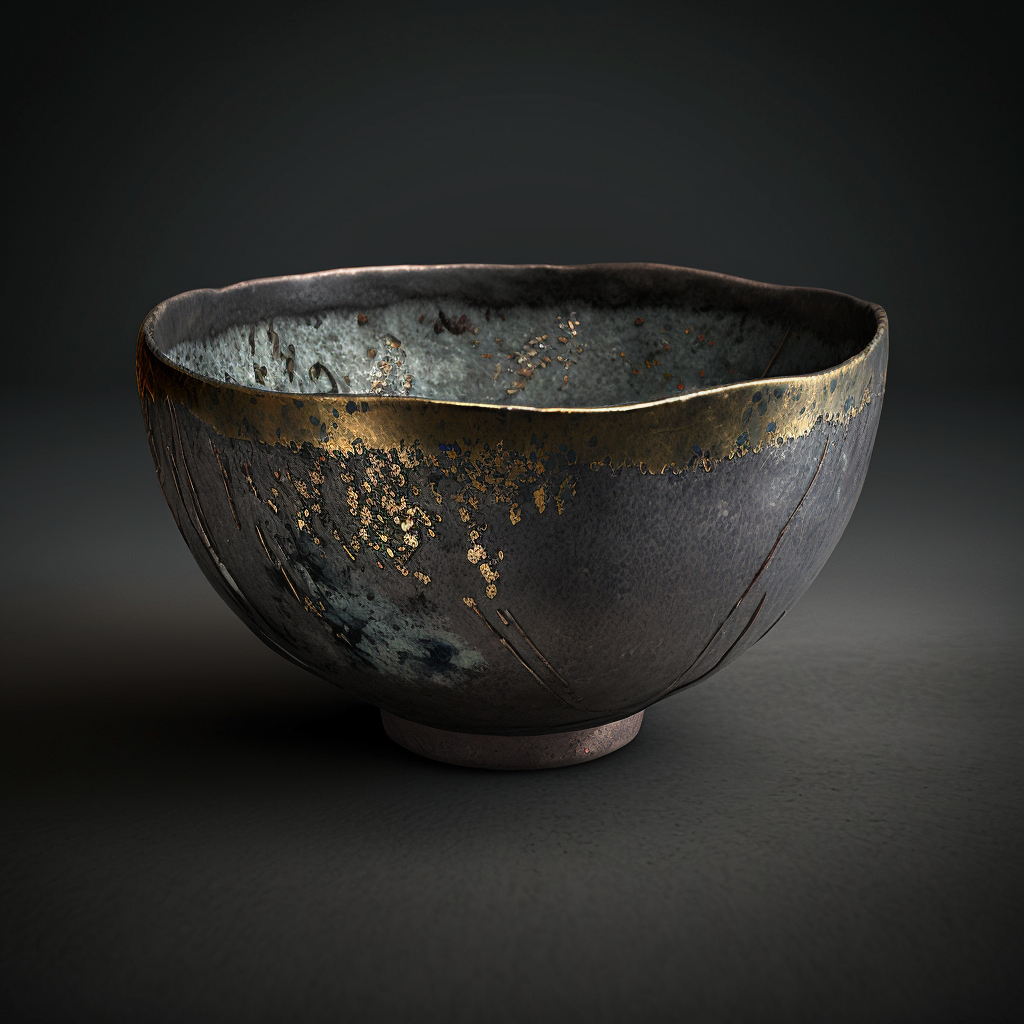Ikebana, die traditionelle japanische Kunst des Blumensteckens, fand in der Ohara-ryū-Schule (小原流) einen besonderen Ausdruck. Diese 1912 von Unshin Ohara gegründete Schule hat sich seitdem zu einer wichtigen kreativen Kraft in der Welt des Ikebana entwickelt und dieser alten Kunst eine einzigartige Perspektive verliehen.
Geschichte der Ohara-Schule :
Die Ohara-Schule wurde in Tokio gegründet und zeichnete sich schnell durch ihren innovativen Ikebana-Ansatz aus. Unshin Ohara, der Gründer, führte das Konzept von „Moribana“ oder der Anordnung in einem flachen Behälter ein und markierte damit den Beginn einer neuen Ära für Ikebana. Im Laufe der Jahrzehnte hat die Ohara-Schule kontinuierlich Innovationen hervorgebracht und gleichzeitig die Grundprinzipien von Harmonie und Ausgeglichenheit bewahrt.
Philosophie und Prinzipien der Ohara-Schule :
Die Ohara-Schule zeichnet sich durch ihre auf Natur und Saisonalität ausgerichtete Philosophie aus. Die im Rahmen von Ikebana Ohara kreierten Blumenarrangements spiegeln die sich im Laufe der Jahreszeiten verändernde Schönheit der Natur wider. Die Suche nach Harmonie zwischen den verwendeten natürlichen Materialien und dem Behälter steht im Mittelpunkt dieser Schule und fördert gleichzeitig die persönliche Kreativität der Künstler.
Unique Styles and Techniques :
The Ohara style in Ikebana is characterized by its innovative approach and its particular sensitivity to nature. Founded by Unshin Ohara in 1912, this school introduced innovative concepts that expanded the traditional practice of Ikebana. Here are some key elements of the Ohara style:
- Moribana Composition : One of the most notable contributions of the Ohara school is the development of the “Moribana” style, which literally means “a falling flower”. This technique involves creating arrangements in shallow, often asymmetrical containers. The materials are arranged to represent nature in its natural state, capturing the idea of life and movement.
- Season and Nature : The Ohara style places a strong emphasis on seasonality and the faithful representation of nature in floral arrangements. The compositions are designed to reflect the changing characteristics of the seasons, incorporating specific elements to evoke a seasonal ambiance. This deep connection with nature is at the heart of the Ohara philosophy.
- Creative Use of Space : The Ohara style encourages creative use of space in floral arrangements. Arrangements can extend vertically and horizontally, exploiting the space around floral materials to create visual harmony. This approach allows for greater artistic freedom while maintaining the balance and elegance characteristic of Ikebana.
- Contrast and Color : The Ohara style often incorporates contrasts of shapes, textures and colors to create dynamic compositions. The clever use of color is an essential aspect, with particular attention paid to the combination of complementary or contrasting hues to emphasize the beauty of each element.
- Creative Freedom : Although deeply rooted in the traditional principles of Ikebana, the Ohara style encourages creative freedom. Students and practitioners are encouraged to express their individuality and experiment with different styles and concepts, while respecting the aesthetic foundations of the school.
The different styles
In the world of Ikebana, different styles and shapes contribute to the richness of this traditional Japanese art. Here are some key styles :
- Hana-ishō (花意匠) : Serving as a fundamental freestyle, Hana-ishō offers practitioners the freedom to express their creativity without strictly adhering to established rules. It embodies an approach to floral design that is both basic and versatile.
- Moribana (盛り花) : Developed by the founder of the Ohara school, Ohara Unshin, Moribana quickly gained popularity among the various schools of Ikebana. This style involves the arrangement of flowers in a shallow container, emphasizing asymmetry and the depiction of natural landscapes.
- Hanakanade (花奏) : Characterized by two intersecting lines, the Hanakanade creates a harmonious and balanced arrangement. The intersection of these lines symbolizes a dynamic interaction between the elements, demonstrating a delicate balance within the composition.
- Hanamai (花舞) : Venturing into the realm of three-dimensional art, Hanamai explores the spatial dimensions of Ikebana. This style encourages arrangements that go beyond traditional boundaries, adding a sculptural quality to floral design.
- Heika (瓶花) : Also called nageirebana (抛入花), Heika refers to an arrangement in a tall vase. This traditional style emphasizes the natural lines of flowers and branches, creating a graceful and flowing composition.
- Rimpa (琳派) : Drawing inspiration from the Japanese Rinpa school of art, Ikebana Rimpa incorporates the principles of balance, harmony and grace found in Rinpa style paintings. This style often features lush, decorative elements in arrangements that evoke the aesthetic of classic Japanese art.
- Bunjinbana (文人花) : Reflecting Chinese influence, Bunjinbana is a style that emphasizes simplicity and elegance. Inspired by literary paintings, this style of Ikebana often incorporates clean arrangements that convey a sense of poetic beauty and contemplation.
Each of these styles of Ikebana contributes to the diversity and evolution of the landscape of Japanese floral art, highlighting the adaptability and creativity inherent in the practice of Ikebana.
Training and Knowledge Transmission :
Learning at the Ohara school takes place through structured courses and workshops where students are guided by qualified teachers. Emphasis is placed on in-depth understanding of the aesthetic principles, techniques and symbolism associated with each floral arrangement. The school places particular importance on practical experience, allowing students to develop their artistic sensibilities over time.
International influence :
The Ohara School’s influence extends beyond Japan, with branches and affiliations in many countries. Ikebana practitioners around the world recognize the unique contribution of the Ohara school to this floral art, with its subtle balance between tradition and innovation.
The Ohara school has evolved over time while preserving the essence of Ikebana. Its nature-focused philosophy, commitment to individual creativity and international presence make it a major force in the world of floristry. By exploring Ikebana Ohara, art lovers discover a universe where the ephemeral beauty of nature is uniquely captured and celebrated, transcending cultural boundaries to become a universal expression of Japanese floral aesthetics.



